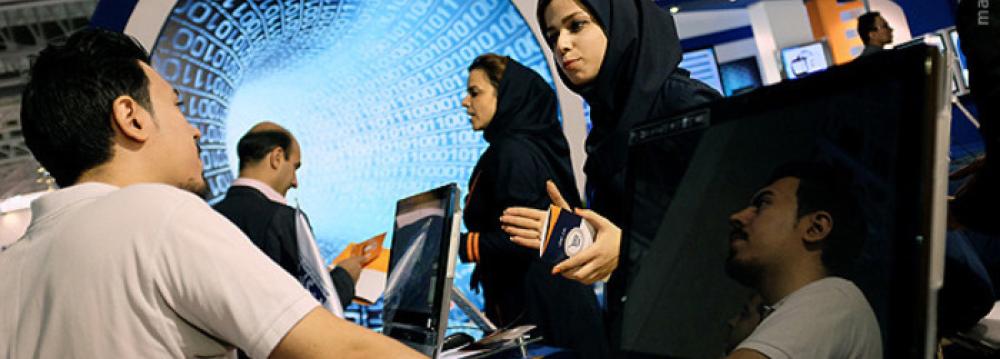Tehran hosted the 16th Iran Telecom Fair 2015 during Sept. 26-29.
The four-day event was attended by 212 local and 80 foreign companies, including firms from Germany, Italy, Russia and UAE.
The event provided an opportunity for researchers and industrialists to familiarize themselves with the latest industrial and technological advances in the realm of telecommunications and information technology. It also prompted Iranians to present their developments and potentials in the field.
Iran’s Telecommunications Company and three mobile phone operators had a leading presence at the event, the Persian website Khabaronline wrote.
According to a company press release, Iran’s first mobile phone operator, Hamrah-e-Aval or MCI, signed a deal with Chinese company Asoshid Trade. Following the agreement, the two companies will engage in an exclusive partnership to sell Hamrah-e-Aval SIM cards in a package along with Xiaomi cellphones.
MCI also announced its new online sales website shop.mci.ir that sells all the company’s products with discounts and sends them to the customers’ delivery location of choice, free of charge. For now, the service is only available to Tehran’s residents, but will soon expand across the country.
Iran’s second mobile phone operator, Irancell, also unveiled several new services, applications and websites. Notable products included an educational software named “Dana” as well a virtual library named “Ketabkhan” (meaning reader in Farsi) as well as “Rhythm” which is an audio platform.
Iranian companies presented local technological devices, including radio masts and towers, energy saving devices and modular switches.
An information technology-focused company of the private sector presented a new software named “Panjereh” (window in Farsi) used for monitoring children’s use of Internet, IRNA reported.
According to Mohsen Yousefpour, the company’s business manager, “The amount of time children spend on the Internet has become a major concern for parents. Using this software, parents can limit the content their children can access and also enforce time limits on their Internet usage.”
The program creates a safe browsing space for children of ages three to 10 and provides them access to content and applications appropriate for their age. The beta version of the program has been trialed and will soon be made available.
Yousefpour noted that the company has also launched two social media websites targeted at children, namely ChikChik and Badbadak, though which they can share pictures and paintings, and keep in touch with friends.
Several educational workshops and conferences were also held on the sidelines of the fair.


